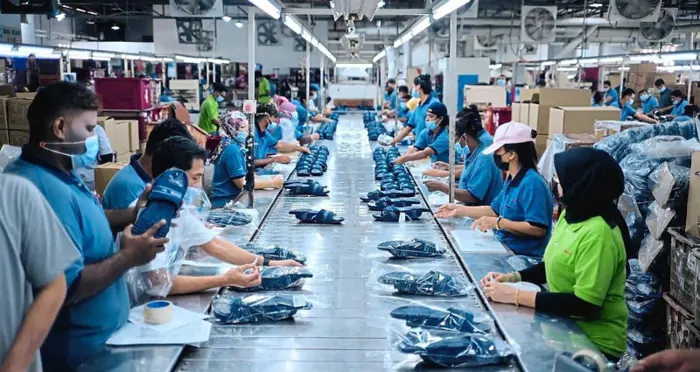Businesses in a bind over safety
PETALING JAYA: Bosses are keen on keeping workplaces safe but they simply do not have the resources to do it.It has been a month since the new occupational safety and health rules were implemented but many employers are still in the dark about the details of the law, and those who are aware are struggling to comply due to a lack of resources.
Under the Occupational Safety and Health Act (Osha) (Amendment) 2022 which came into effect on June 1, employers, especially those from small businesses, must appoint at least one occupational safety and health coordinator from among their staff (see infographic).
SME Association Malaysia president Ding Hong Sing said only a small percentage of small and micro enterprises trained their employees under the new Osha rules.
These enterprises, especially those with 10 or fewer employees, need additional resources to comply with the new ruling, he added.
Many are still unaware about the new occupational safety and health rules, he said, and those that were, simply do not have the funds to pay for employee training.
“And, employers will need to give up a staff member for three days of training, which may affect their daily operations,” he added.
He said many are also unaware of where to go for the occupational safety and health training.
“The government should give SMEs a step-by-step guide, continuously remind us of the new rules, and show us what we need to do to comply with the ruling,” he said, while proposing that the Social Security Organisation (Socso) provide free training to support SMEs as it has the resources.
“Employers are familiar with Socso, so at least SMEs will have a point of reference if there is a need to clarify things or if we are unsure about the new ruling.”
ALSO READ : Some small businesses say they’re unaware of Osha
Medium enterprises, he said, were in a better position to comply with the new Osha as they could use the Human Resource Development Corporation levy for training.
“Also, businesses involved in exports already have to comply with international occupational health safety standards,” he said.
Small and Medium Enterprises Association of Malaysia (Samenta) national president Datuk William Ng said many SMEs were struggling to implement the new provisions.
“The challenge is not just cost-related nor is it about whether one is willing to comply.
“There is a lack of trained occupational safety and health consultants to help SMEs perform the risk assessment and to develop protocols to address those risks,” he said, adding that appointing in-house employees to the role was hard due to limited manpower.
Describing the new law as “a one-size-fits-all solution”, he said every business was different and had varied risk profiles.
“It will be better to adopt a rating system to reward and recognise businesses for compliance instead,” he said.
Occupational safety and health trainer Daman Huri Mohammad said many SMEs were concerned about compliance but some were adopting a wait-and-see approach due to a lack of enforcement.
He said training courses for occupational safety and health coordinators cost between RM500 and RM900 per person.
Malaysian Trades Union Congress (MTUC) president Mohd Effendy Abdul Ghani said reactions from employers had been mixed.
“In some cases, existing staff have been forced to take on the role of health and safety coordinator without proper training or additional compensation, leading to dissatisfaction among employees and challenges in implementing safety measures effectively,” he said.
Federation of Malaysian Manufacturers (FMM) president Tan Sri Soh Thian Lai said employers should not view the requirement to appoint an occupational safety and health coordinator as a burden.
“A coordinator ensures all workplaces, regardless of size, have a systematic approach to managing safety and health and that there is a consistent application of safety standards across all sectors.
“Hiring a coordinator is also more cost-effective than employing a full-time safety health officer,” he said.
Soh said compliance with the new Osha starts with understanding the legal requirements, selecting the right person to be a coordinator and ensuring that the person is given training to carry out the role.
This, he said, must be accompanied with developing a safety and health policy, conducting risk assessments, maintaining records and documentation and ensuring continuous improvements for the overall betterment of the organisation.
“It is critical that the top management supports the coordinator by allocating sufficient funds and time to implement and maintain effective safety practices.
“We hope the government will consider providing financial support for the SMEs in Budget 2025 as this can enhance the effectiveness of Osha,” he said.
In January, a worker died after falling from a height of 5m while carrying out construction while another died while repairing the body of a palm kernel polishing drum due to oxygen deficiency.














Leave a Reply